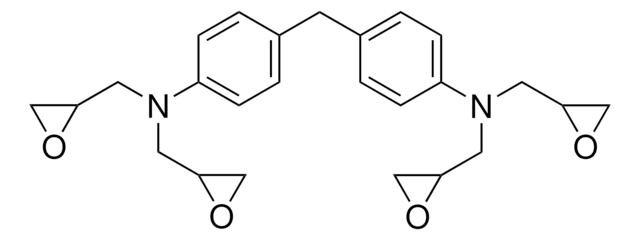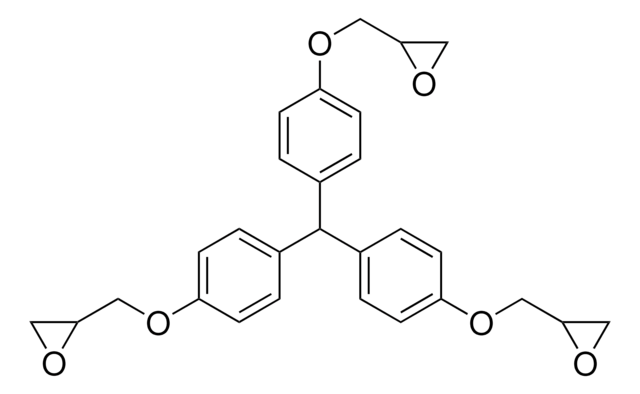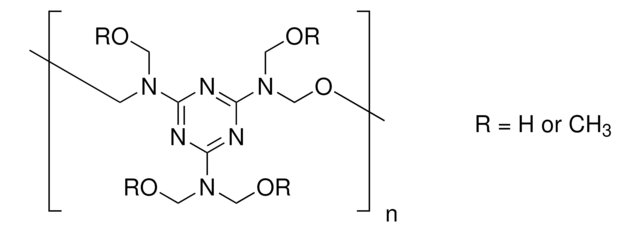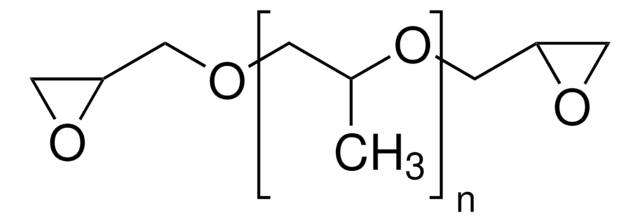405515
Poly[(o-kresylglycidylether)-co-formaldehyd]
average Mn ~870
Synonym(e):
Formaldehyde, polymer with (chloromethyl)oxirane and 2-methylphenol
About This Item
Empfohlene Produkte
Form
chunks
Mol-Gew.
average Mn ~870
Kennzeichnungsgrad
5 epoxide functionality
Viskosität
35-50 cP(25 °C)(lit.)
mp (Schmelzpunkt)
70-75 °C (lit.)
70-75 °C
Übergangstemp.
Tg (DSC) 37-39 °C
Tg 37-39 °C (DSC)
Dichte
1.12 g/mL at 25 °C (lit.)
InChI
1S/C7H8O.C3H5ClO.CH2O/c1-6-4-2-3-5-7(6)8;4-1-3-2-5-3;1-2/h2-5,8H,1H3;3H,1-2H2;1H2
InChIKey
XRYDVSRMOIMZGM-UHFFFAOYSA-N
Suchen Sie nach ähnlichen Produkten? Aufrufen Leitfaden zum Produktvergleich
Verwandte Kategorien
Anwendung
Signalwort
Warning
H-Sätze
Gefahreneinstufungen
Eye Irrit. 2 - Skin Irrit. 2 - STOT SE 3
Zielorgane
Respiratory system
WGK
WGK 3
Flammpunkt (°F)
235.4 °F
Flammpunkt (°C)
113 °C
Persönliche Schutzausrüstung
dust mask type N95 (US), Eyeshields, Gloves
Analysenzertifikate (COA)
Suchen Sie nach Analysenzertifikate (COA), indem Sie die Lot-/Chargennummer des Produkts eingeben. Lot- und Chargennummern sind auf dem Produktetikett hinter den Wörtern ‘Lot’ oder ‘Batch’ (Lot oder Charge) zu finden.
Besitzen Sie dieses Produkt bereits?
In der Dokumentenbibliothek finden Sie die Dokumentation zu den Produkten, die Sie kürzlich erworben haben.
Kunden haben sich ebenfalls angesehen
Unser Team von Wissenschaftlern verfügt über Erfahrung in allen Forschungsbereichen einschließlich Life Science, Materialwissenschaften, chemischer Synthese, Chromatographie, Analytik und vielen mehr..
Setzen Sie sich mit dem technischen Dienst in Verbindung.![Poly[(phenylglycidylether)-co-formaldehyd] average Mn ~345](/deepweb/assets/sigmaaldrich/product/structures/122/336/0cd8255f-9639-47f1-ae7b-09908419ab3f/640/0cd8255f-9639-47f1-ae7b-09908419ab3f.png)







